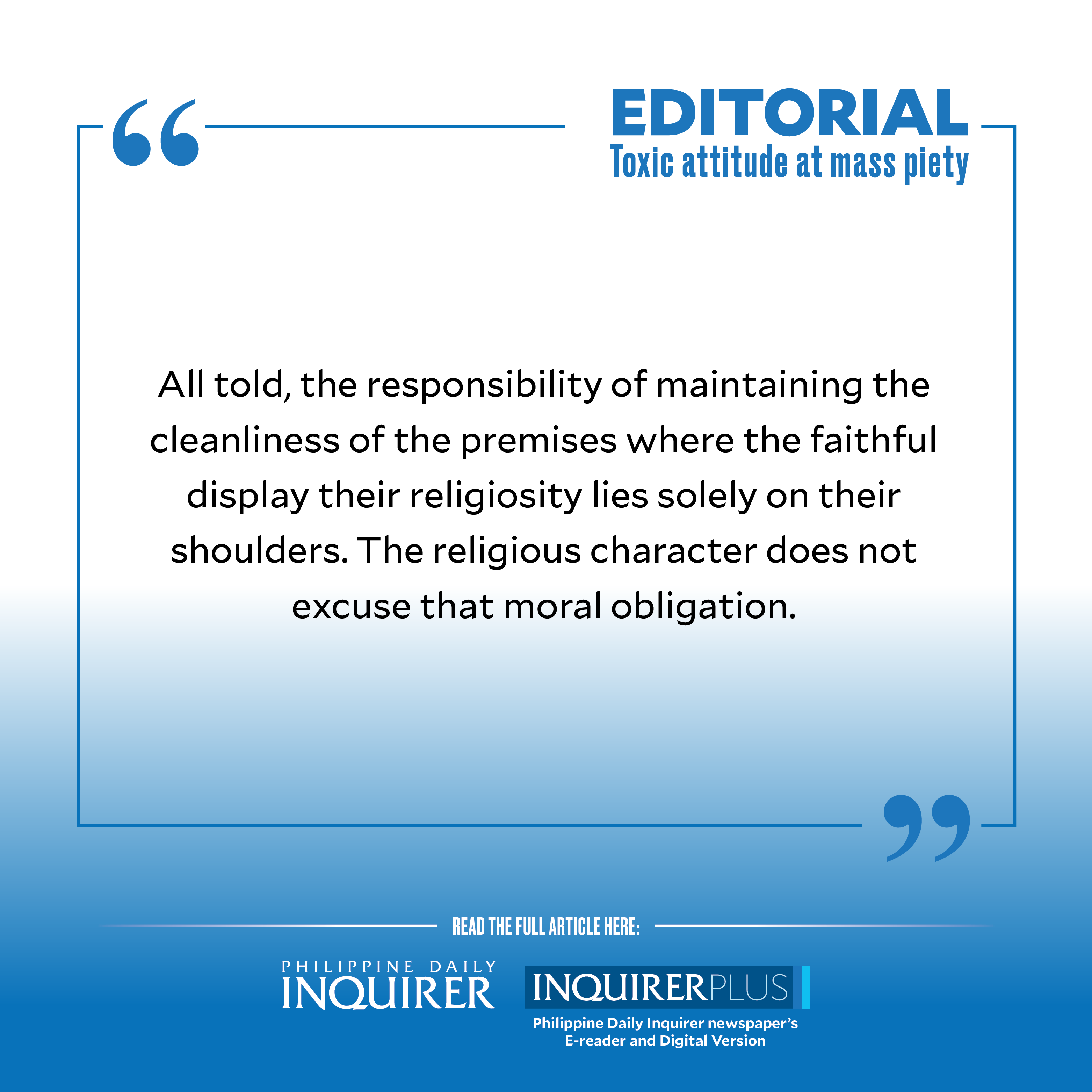Toxic display at mass piety
This year’s celebration of the Feast of the Black Nazarene in Manila showed, once more, the strong attachment of Filipinos to some religious rites of the Catholic Church.
Last Jan. 9, approximately 6.5 million people were reported to have participated in the Traslacion (or the transfer of the religious icon from Intramuros to Quiapo Church) that took almost 15 hours.
Article continues after this advertisementTo that number should be added the devotees in their homes, hospitals, work premises, or other parts of the world who watched the procession on livestream in their gizmos.
President Marcos even declared that day as a special nonworking day in Manila to allow more of the faithful to attend the biggest public religious gathering in the country every first week of January.
The huge number of attendees, who, following tradition, walked barefoot on hot streets from start to finish, may be described as a case of “revenge attendance” because the procession was disallowed by the government from 2021 to 2023 to prevent the spread of COVID-19.
Article continues after this advertisementPeaceful and orderlyThe event was marked by numerous attempts by devotees to hold a piece of the ropes that pulled the statue’s carriage or to climb it to touch its glass cover in the belief that their action would result in the grant of their wishes.
Never mind that in the process they could get hurt. Their faith trumps any physical suffering.
It helped that the personnel of the Philippine Red Cross were on the scene to provide the needed medical assistance or treatment.
By and large, the procession was peaceful and orderly.
The security measures implemented by the Police National Police, e.g., deployment of a large contingent of uniformed personnel and clearing of street obstructions ahead of time, enabled the sea of humanity to complete the return of the icon to the church with minimal disruptions.
But the otherwise favorable impression on the devotees’ display of faith was marred by the deplorable state of the streets after they had completed their religious mission and left.
Garbage collectionAccording to the spokesperson of Manila Mayor Honey Lacuna-Pangan, a total of 128 metric tons of trash were collected which filled 46 garbage trucks.
They consisted of, among others, single-use plastic bags, bottles, cups, packaging leftovers, soiled diapers, improvised sleeping materials, cigarette butts, and disposable vapes.
It’s unfortunate that many of the devotees dumped their garbage on the streets, leaving the job of cleaning after them to the city’s sanitary staff.
To the credit of those personnel, as soon as the streets were cleared of people, they collected the trash before they could clog the city’s water drains and contribute to the perennial flooding problem in those streets and plastic pollution in Manila Bay.
The lack of discipline of many devotees in handling their garbage is disheartening. It happens every year despite repeated pleas by church and government authorities to dispose of them properly, i.e., put them in designated trash cans or bring them home.
Cleanliness traitNo doubt that if they were in their own house, they would make sure leftover foods are placed in a covered garbage can and recyclable plastic and paper materials are segregated for possible sale to junk shops.
And woe to anybody who dumps garbage near their house. They would raise hell because they feel their private space had been violated.
It’s a puzzler that the trait of cleanliness in garbage that many Filipinos usually observe is forgotten once they’re out of their house and have to get rid of personal trash.
When a garbage bin is within arm’s reach, there is no hesitation in using it. But if none is in sight or would require taking a short walk, chances are the trash would either be dropped on the ground or discreetly placed at any available space.
It’s a reprise of the Dr. Jekyll and Mr. Hyde story.
Herculean task Changing the attitude of future participants in the Black Nazarene procession on the handling or disposition of their trash would be a herculean task.
Considering the huge number of devotees involved, there is absolutely no way authorities, no matter how many police and sanitation personnel may be assigned, can effectively enforce the rules on proper disposition of garbage.
All told, the responsibility of maintaining the cleanliness of the premises where the faithful display their religiosity lies solely on their shoulders. The religious character does not excuse that moral obligation.
Remember the saying “cleanliness is next to godliness”? If only its message is taken to heart by future participants in the procession, the Ecowaste Coalition would not have any reason to shake their head in disbelief and disappointment after every such religious event.

















